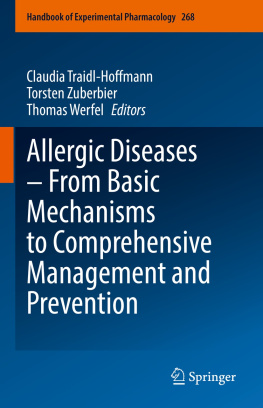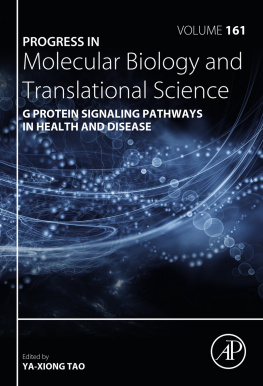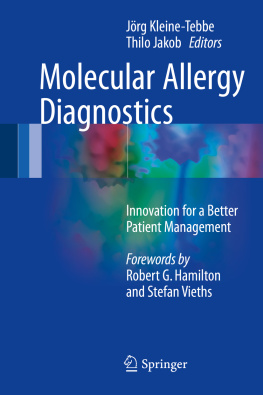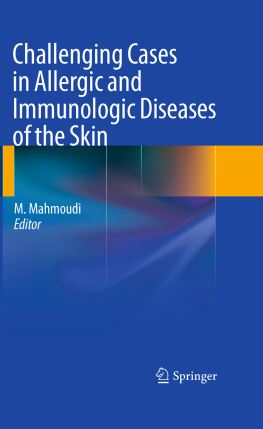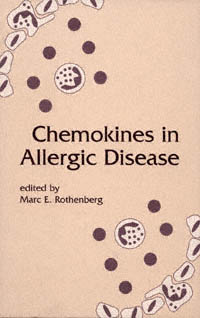Start of Citation[PU]Marcel Dekker, Inc.[/PU][DP]2000[/DP]End of Citation
| title | : |
| author | : |
| publisher | : |
| isbn10 | asin | : |
| print isbn13 | : |
| ebook isbn13 | : |
| language | : |
| subject |
| publication date | : |
| lcc | : |
| ddc | : |
| subject | : |
|
| Chemokines in Allergic Disease |
edited by
Marc E. Rothenberg |
Children's Hospital Medical Center
Cincinnati, Ohio |
|
Start of Citation[PU]Marcel Dekker, Inc.[/PU][DP]2000[/DP]End of Citation
|
| This book is printed on acid-free paper. |
Headquarters
Marcel Dekker, Inc.
270 Madison Avenue, New York, NY 10016
tel: 212-696-9000; fax: 212-685-4540 |
Eastern Hemisphere Distribution
Marcel Dekker AG
Hutgasse 4, Postfach 812, CH-4001 Basel, Switzerland
tel: 41-61-261-8482; fax: 41-61-261-8896 |
World Wide Web
http://www.dekker.com |
| The publisher offers discounts on this book when ordered in bulk quantities. For more information, write to Special Sales/Professional Marketing at the headquarters address above. |
| Copyright 2000 by Marcel Dekker, Inc. All Rights Reserved. |
| Neither this book nor any part may be reproduced or transmitted in any form or by any means, electronic or mechanical, including photocopying, microfilming, and recording, or by any information storage and retrieval system, without permission in writing from the publisher. |
Current printing (last digit):
10 9 8 7 6 5 4 3 2 1 |
| PRINTED IN THE UNITED STATES OF AMERICA |
|
Start of Citation[PU]Marcel Dekker, Inc.[/PU][DP]2000[/DP]End of Citation
|
To my dear Joy
and my sweet daughters,
Eliana, Danielle, and Joelle |
|
Start of Citation[PU]Marcel Dekker, Inc.[/PU][DP]2000[/DP]End of Citation
|
| Over the past decade, chemokines have emerged as an important superfamily of chemoattractant cytokines that also promote leukocyte activation and development. The hallmark of allergic diseases is the accumulation of an abnormally large number of inflammatory cells, such as eosinophils and T lymphocytes, in tissue locations. There is now substantial evidence that mediators derived from these inflammatory cells are strongly associated with the pathogenesis of allergic disorders. It is therefore of fundamental importance to understand the processes that control leukocyte accumulation. A substantial body of evidence has recently emerged linking chemokines to cell recruitment and activation in allergic disease. This book is designed to synthesize the latest breakthroughs in the allergy and chemokine fields. It is hoped that by bridging these two areas of research, new paradigms and concepts concerning the pathogenesis and treatment of allergic disease will emerge. |
| Because of the clinical importance of chemokines and the potential benefit of pharmaceutical intervention in the chemokine pathway, there have been many recent advances in the chemokine field. Understanding the biological properties of chemokines is complicated by the presence of nearly 60 structurally related chemokines and over a dozen receptors. The process is even more complex since each chemokine interacts with multiple cell targets and individual chemokine receptors bind multiple ligands. Nevertheless, the chemokines mainly active on the cells involved in allergic reactionslymphocytes, eosinophils, and basophilsare relatively restricted, making specific pharmacological intervention a promising approach to the treatment of allergic disease. |
| This book is designed to give an up-to-date overview of the molecular structure, gene regulation, biological properties, and signal transduction pathways of the chemokines as well as therapeutic strategies for interfering with chemokines in allergic diseases. It is meant to serve as a valuable resource for basic and clinical immunologists, pharmacologists, physicians, molecular biologists, biochemists, and students interested in chemokines and/or allergic diseases. Part I introduces chemokine and chemokine receptor terminology, the basic science of leukocyte recruitment, and the biochemistry, molecular biology, and physical structure of chemokines and their receptors. Part II covers broad scientific topics |
|
Start of Citation[PU]Marcel Dekker, Inc.[/PU][DP]2000[/DP]End of Citation
|
| related to chemokines and allergic responses. Included are chapters on transcriptional regulation of chemokine expression and breakthroughs on the diverse biological functions of chemokines. A separate chapter discusses virally induced chemokine gene expression since viruses are a main trigger of allergic responses in children. This section also has separate chapters on the chemokines that target the cells important in allergic responses: eosinophils, basophils, and T lymphocytes. A separate chapter elucidates the cellular and cytokine networks involved in the generation of chemokines in allergic diseases. Part III, the most clinical, discusses the involvement of chemokines in a full spectrum of human allergic disorders. Finally, Part IV covers exciting advances and future approaches for pharmacological intervention related to the various chemokine pathways involved in allergic disorders. These chapters describe pharmaceutical approaches for the development of chemokine structural analogs, receptor antagonists, and inhibitors of signal transduction. A chapter elucidating the mechanism of glucocorticoid-mediated inhibition of chemokines is also included, since glucocorticoid therapy is currently the mainstream therapy for treatment of allergic disorders. |
| This is the first book devoted exclusively to the comprehensive study of chemokines and allergic disorders. This publication is especially timely given the recent surge of studies on chemokines and the strong emphasis on the development and testing of novel pharmaceutical compounds. Many of these agents may be developed for the treatment of nonallergic diseases, such as acquired immunodeficiency syndrome (AIDS), but many may also be applicable to allergic disorders. It is anticipated that this book will bridge the most progressive researchers in the allergy field with those in the chemokine field. This will aid the advancement of allergy research and the application of novel therapeutics to the treatment of patients suffering from allergic and other related disorders. |
|
Next page


